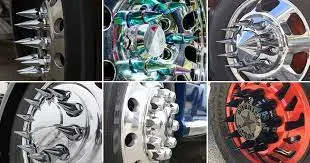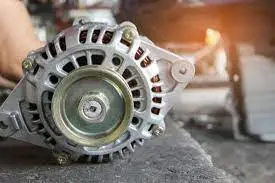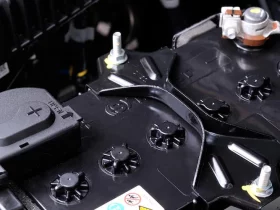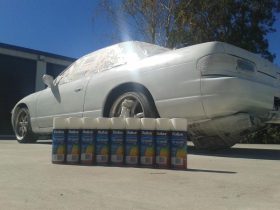You may have noticed that some trucks have spikes on their wheels. These spikes, often referred to as “wheel spikes” or “wheel spikes” are not just for decorative purposes. They actually serve an important function in the trucking industry.
While they may look intimidating, these spikes are designed to improve traction and grip on slippery roads, especially during the winter months.
The Purpose and Function of Wheel Spikes
The purpose and function of wheel spikes on trucks go beyond just aesthetics. These spikes play a crucial role in enhancing the performance and safety of trucks, particularly in challenging weather conditions.
One of the primary reasons why trucks have spikes on their wheels is to improve traction on icy or snowy roads. With spikes, trucks can grip the surface better, preventing them from sliding or skidding.
Wheel spikes also aid in maintaining the overall stability of the truck. By digging into the road surface, they increase friction and prevent the vehicle from losing control.
A Brief History of wheel spikes
In ancient Egypt, chariots were equipped with spiked wheels to improve traction and stability while navigating rough terrain. The concept was further refined by the Greeks, who developed chariot wheels with iron spikes for military purposes.
Fast forward to the late 19th century, when the advent of the automobile industry brought new challenges and opportunities. With the increasing demand for transportation and the invention of the pneumatic tire, wheel spikes were adapted and reintroduced in a more modern and efficient form.
Over the years, advancements in technology and tire manufacturing techniques have led to the development of various types of wheel spikes.
The Safety Benefits of Wheel Spikes
One of the primary reasons why trucks have spikes on their wheels is for safety purposes. These spikes, also known as studs, play a crucial role in enhancing traction and stability when driving on slippery surfaces.
During winter months, when roads are covered in snow and ice, trucks equipped with studded tires have a significant advantage. The metal studs protruding from the tire tread grip into the surface, providing much-needed traction and preventing vehicles from sliding or skidding.
The safety benefits of wheel spikes extend beyond winter conditions. In off-road and construction environments where trucks often encounter muddy or uneven terrains, the spikes help to maintain grip, ensuring the vehicle stays firmly planted and reducing the risk of accidents.
Regulatory Standards for the Use of Wheel Spikes
When it comes to using wheel spikes on trucks, it is essential for truck owners and drivers to adhere to regulatory standards and guidelines. Many regions have imposed restrictions and regulations to ensure the safe and responsible usage of studded tires.
The purpose of these regulations is to prevent any potential damage to road surfaces and minimize the environmental impact of wheel spikes. The impact of studs on roadways can vary depending on factors like pavement condition, speed limits, and weather conditions.
The use of spiked wheels is only permitted during specific months, typically the winter season when snow and ice pose significant challenges for vehicle traction.
To prevent any legal issues or fines, it is crucial for truck owners to familiarize themselves with the local laws and regulations regarding the use of wheel spikes.
Alternatives to Wheel Spikes and Their Limitations
While wheel spikes are widely used for their traction benefits, some truck owners may prefer alternative options due to varying regulations or personal preferences. These alternatives can provide adequate grip without the need for studded tires.
One such alternative is the use of tire chains. Tire chains are metal chains that wrap around the tire, providing additional traction by digging into the snow or ice.
Another option is the application of tire studs. Unlike wheel spikes, tire studs are small metal pins inserted into the tire tread. They can enhance traction on icy surfaces while minimizing negative effects on the road.
It is crucial to note that each alternative has its limitations and potential drawbacks. Before making a decision, truck owners should consider factors such as local regulations, road conditions, and personal preferences.
Conclusion
Wheel spikes are an effective solution for improving traction on icy and snowy roads for trucks. They provide superior grip, especially in challenging winter conditions, making them a popular choice for many truck owners.
However, it is essential to explore alternatives such as tire chains, tire studs, or winter tires to accommodate different regulations or personal preferences.
Each alternative has its limitations, and truck owners should carefully consider factors such as local regulations, road conditions, and their individual needs. Consulting with tire specialists or trusted professionals can help make informed decisions that prioritize safety and compliance.










Leave a Reply